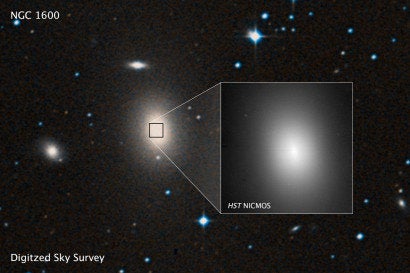This is heavy.
The universe may be teeming with supermassive black holes, suggests new research that could completely overhaul scientists' understanding of the cosmic behemoths.
Astronomers have found a black hole that is 17 billion times the mass of our sun and located essentially in no man's land in the universe, according to the study, published in the journal Nature on Wednesday.
And researchers at the University of California, Berkeley, believe they have yet to uncover many more giant black holes, whose gravitational pulls are so strong, not even light can escape.

Scientists expect to find supermassive black holes -- those with a mass about 10 billion times that of our sun -- in densely populated regions of space, but it's a surprise to encounter one in a less crowded area.
“So the question now is, ‘Is this the tip of an iceberg?’ Maybe there are a lot more monster black holes out there that don’t live in a skyscraper in Manhattan, but in a tall silo somewhere in the Midwestern plains,” said research team leader Chung-Pei Ma, a UC Berkeley astronomy professor, in a statement.

Professor Poshak Gandhi of the University of Southampton, who was not involved in the research, told the Guardian that the study "throws a wrench in the works of our understanding of how these monster black holes form."
"It throws the field wide open," Gandhi said. “What this is saying is that you don’t need these galaxy clusters to grow very massive black holes.”
The newly discovered black hole is located in galaxy NGC 1600, a relative space desert located 200 million light years from Earth. The merger of two distinct black holes may have formed this supermassive one, according to researchers.
UC Berkeley researchers are now seeking out supermassive black holes in Earth’s vicinity.

